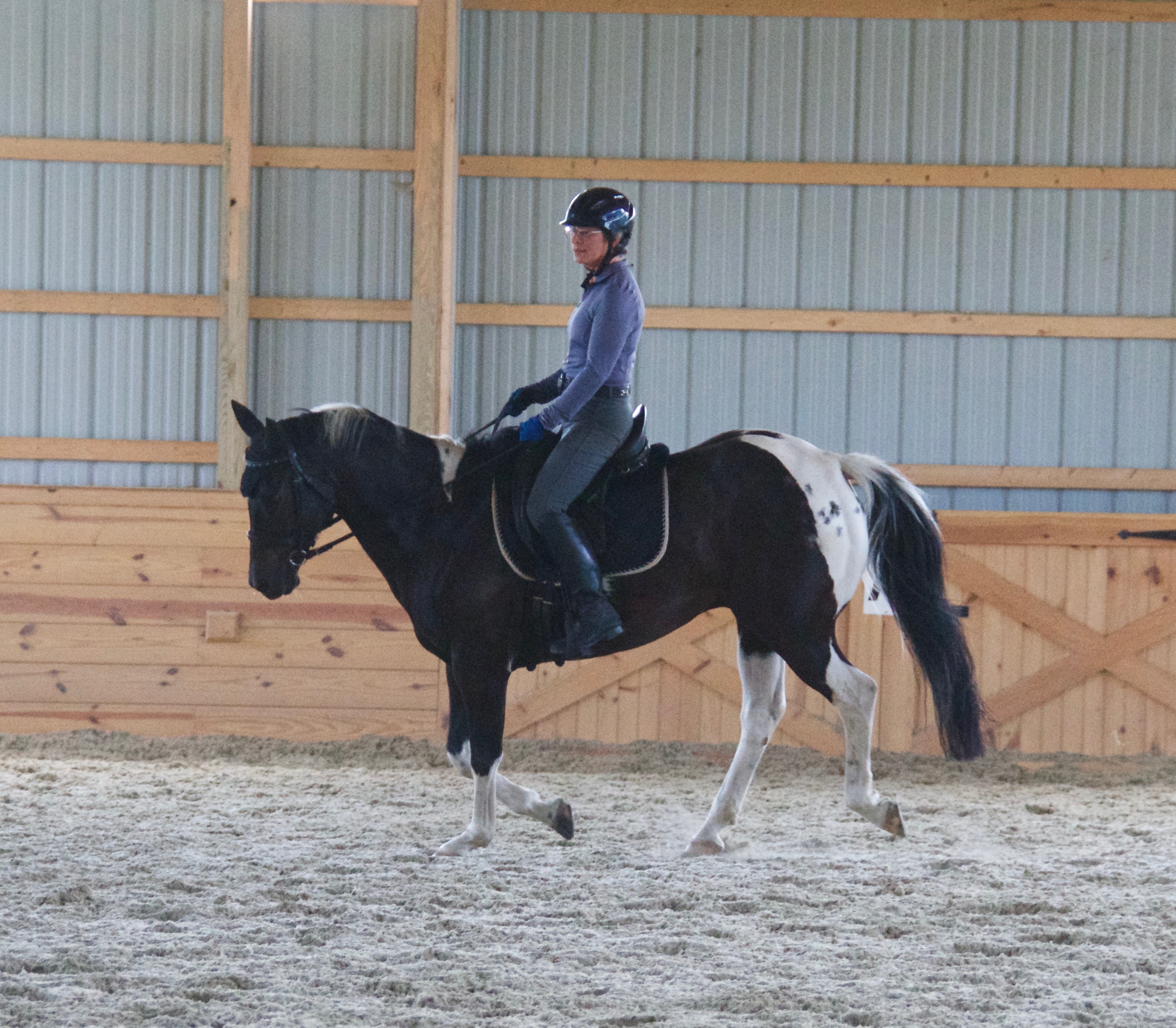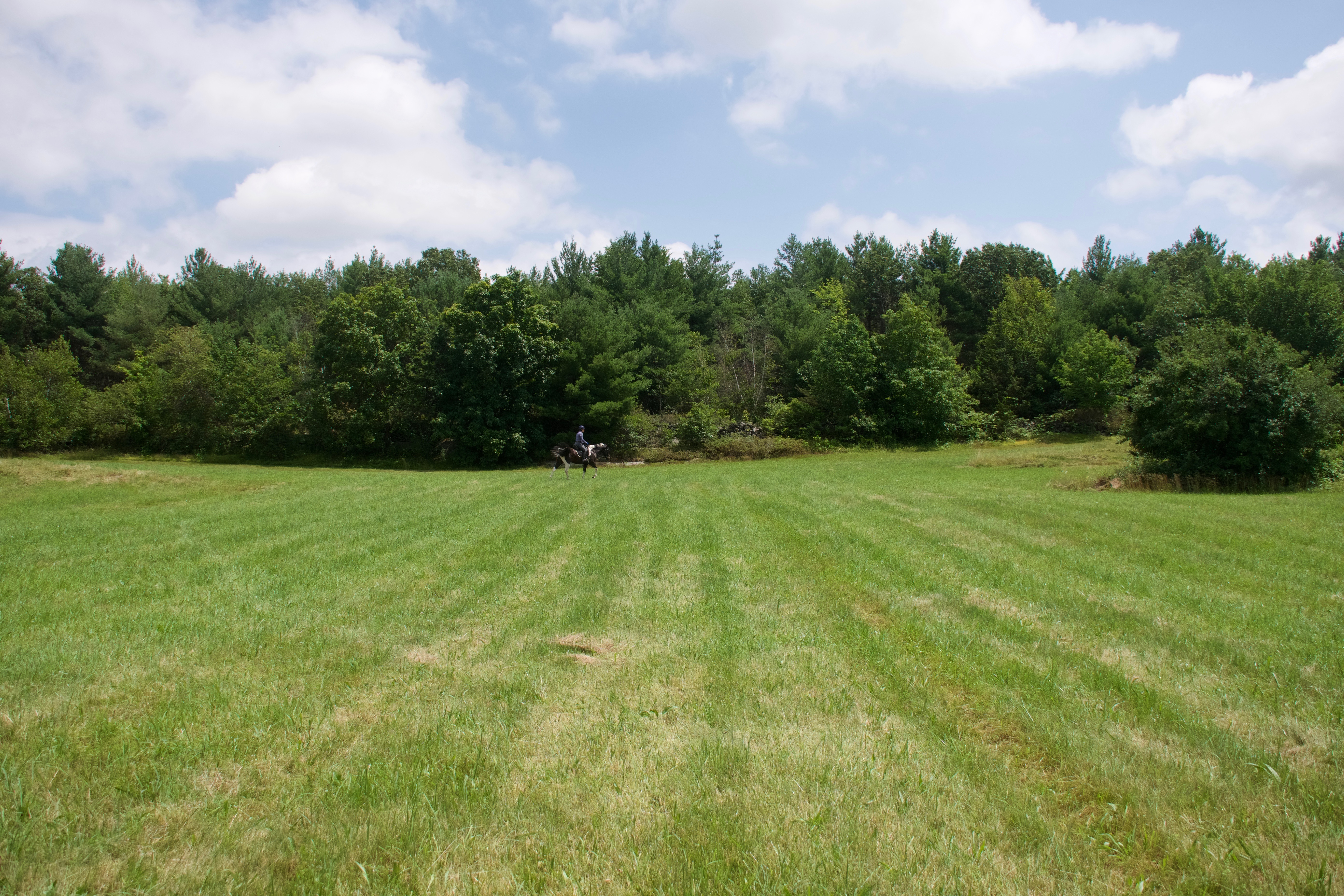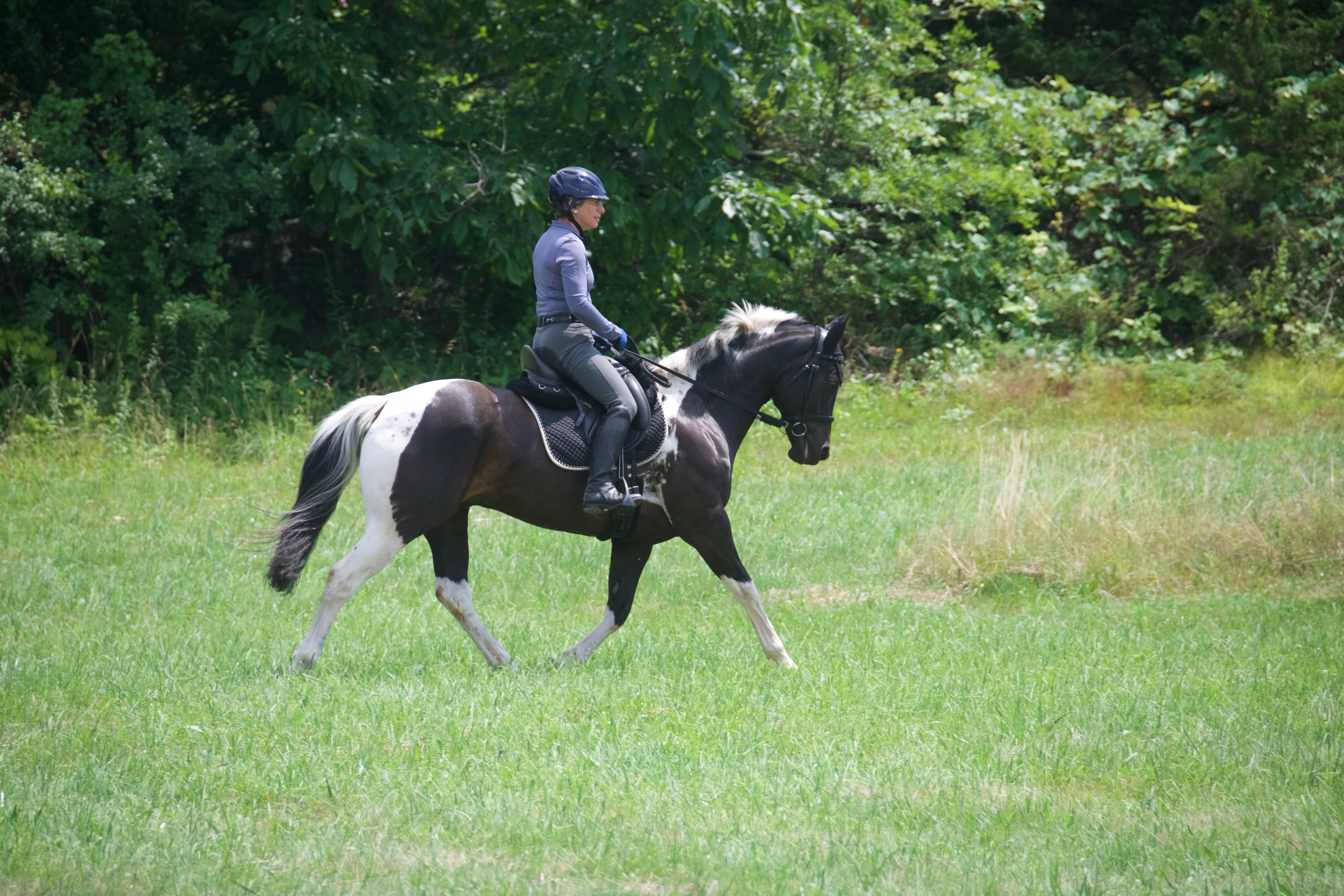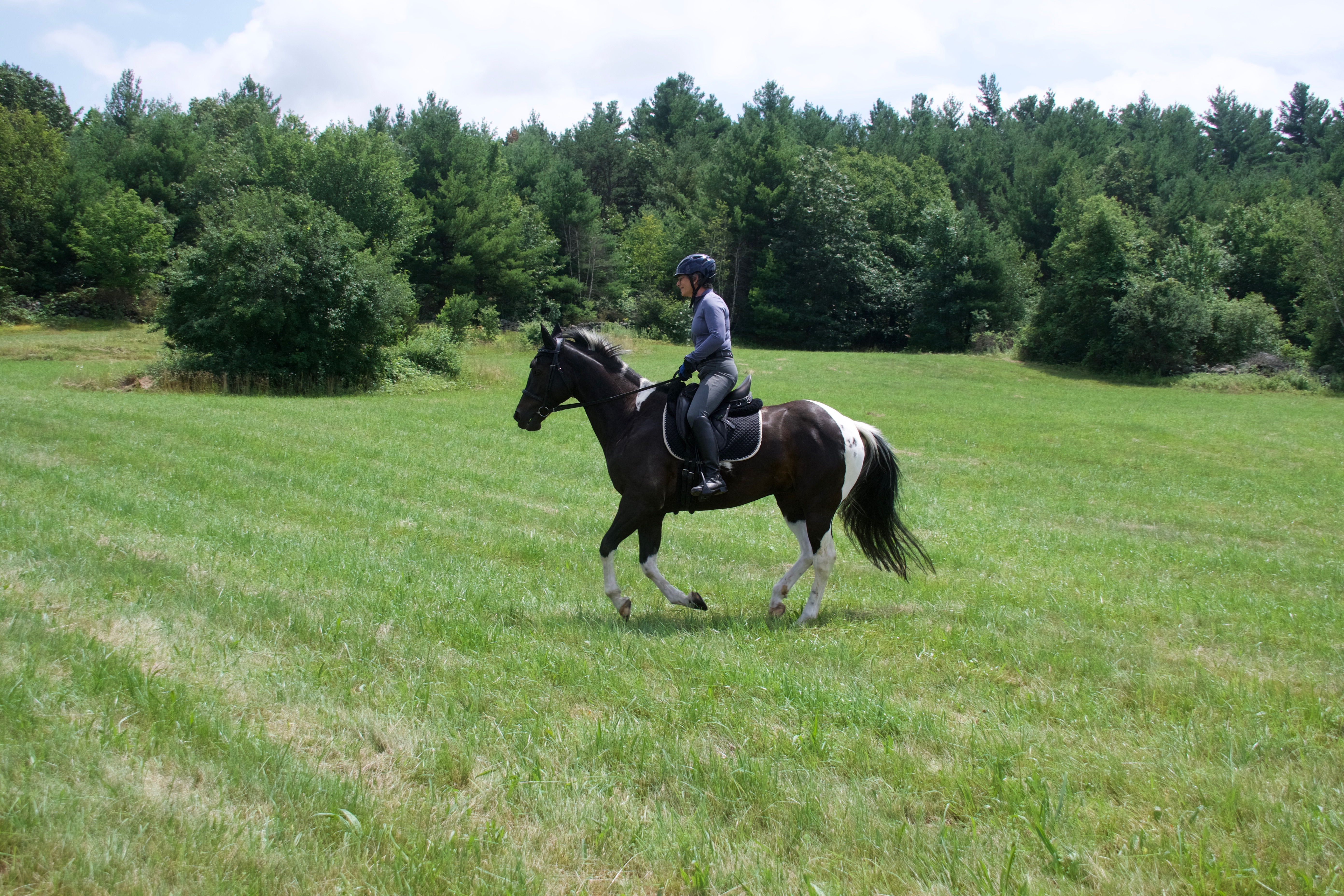I met Tonka three and a half years ago. He had a kind eye and was adorable. But he didn’t have much of a canter. After a few strides he’d get strung out, too long in front and short behind, and he’d fall back into the trot. This is what he looked like when I tried him out.
It didn’t much matter to me. I bought Tonka to be a trail horse – I figured we’d be mostly walking and trotting. That’s exactly what we did for the first year. But, that canter was like that because Tonka lacked balance and fitness, and this I noticed even when moseying down the trail. I also felt that our communication could be finessed. So we started our dressage training. After about a year of adding ring work to our trail riding, I achieved my goal – we both become stronger and more in tune to each other. Along the way, the dressage itself became a pursuit.
We started competing and did rather well. But that canter… it’s still problematic. Tonka is naturally built downhill, which means his rump is higher than his shoulder. Dressage is all about powering from behind, so the horses that succeed in this sport are the big, fancy warmbloods, who are built uphill. My little Paint horse is at a disadvantage. This is how Tonka goes:

Judges look for canter “jump.” Last winter, Kim, my trainer, and I started to work on this. (I detail what we did, including how I use rewards in this training, here.) But right after I wrote that, Tonka had his neck injury. He’s sound again, but we lost ground in the training. At the show last weekend we were rightly marked down for this canter:
At the show, if Tonka could have physically done what I wanted, he would have. Although he isn’t one of those horses that is born with floating gaits, Tonka is capable of moving very nicely, it just requires more gymnastic work to get there. Because of his sane temperament and the way that I build rewards into the work, he’s willing to do what it takes.
I’ll continue with the ring work, but I have a plan to improve the canter without repetitive and demanding exercises. There’s a seven-acre field at Tonka’s new barn. It’s been mowed and we’re allowed to ride through it. There are flat areas, modest slopes and a bit of a hill.

Tonka goes easily around the field at a trot.

But at the canter, he peters out on the uphills and can’t canter at all downhill.

So, with a bit of guidance from me, I’m going to let him sort out his own balance. Uphill and down. Faster and slower.

It’s going to fun. Our next competition is mid-August. I think that our canter will be ready to show off by then.


Play with some ‘bounces’ through little jumps space one canter width apart. You could start this as a game where he does it at liberty down a line to a target. Fun behavior chain to build with R+. Then as he gets competent and confident, start riding him through them.
Great exercise!
Fun too! Of course you must get us video…:-) I’m also jealous of your lovely big field!
Wonderful place to school; would love easy access to something like that for Lance!
That field is one reason why I changed barns. It’s been interesting – I trail ride so thought that Tonka was competent and balanced on uneven ground, but maintaining a stead gait on even a slight slope is challenging for him. This is really going to improve our fitness and our flat work!
I looked on one of your earlier post about “canter jump” and how you were training Tonka. It’s easy to see from your current video that he is going toward what you want. Not really familiar with dressage, I looked on some internet videos to see what canter jump looks like. He needs to raise his front a little more? Little more action with his front legs?
Do you do “piaffe” with him? I don’t know if I said that right.
Great question! And it points to an error that so many people do. It’s not about more front leg action, rather it’s about powering from behind. The front end becomes light only because the hind legs and quarters are sitting back more and carrying them. A correct piaffe and passage (trot in place/elevated trot) takes balance, fitness, and years of gymnastic schooling. Tonka is far from ready for that! When you see videos of a horse doing these things without the prerequisite schooling, you’ll notice how the back sags, the neck is tense, and the horse lifts the hooves without true suspension.
Thanks. I should have known that. Using the hind legs and quarters are important in a lot of disciplines. My MFT that I recently got tries to “hump” her way up hills. She pulls with her front legs instead of using her hind quarters. So I’ve been lifting her front when we go uphill and that makes her use her hind quarters to push. So when she gets the idea and the strength to go uphill that way it will be easier on both of us.
I went and looked at a video of Old-Kladruber Horse Solo Majorita XVII-14 cantering, how lovely.
Exactly! Sometimes you have to put the horse into situations where they have to figure out their own biodynamics. I’ve never ridden a MFT (Missouri Fox Trotter) but I hear they’re as comfy as a couch… but only if they know how to use all four legs 🙂